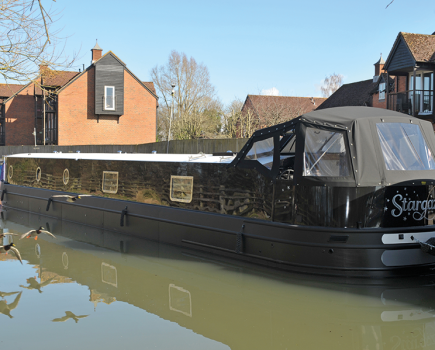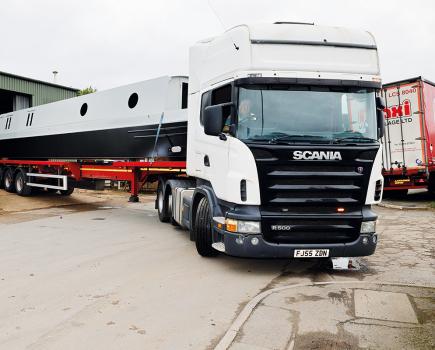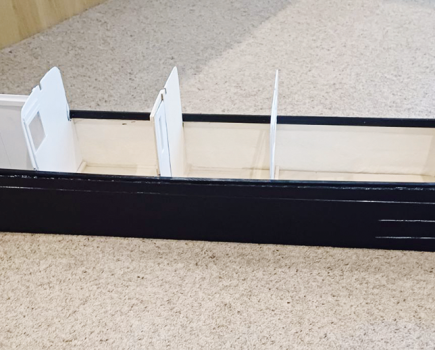Early LED bulbs weren’t that great, but the new generation has warmed things up and now offer decent light as well as helping you cut your electrical power consumption

As with all things electrical on boats, we all spend small fortunes on trying to produce and store electricity onboard. Upgraded alternators, deep cycle batteries, wind and solar energy systems and let’s not forget the gallons of now very expensive diesel. These are all very valiant efforts, but if someone said they could save you up to 90 percent of your lighting energy, and on some boats it can account for up to 60 percent of all the power consumed, I think we’d all agree it would be foolish not to have a look. Lighting in general and that on boats even more so, has changed very little since the dark ages. We’ve given up the gas mantle and now send electricity through filament bulbs or transform it to pass through fluorescent tubes. While these both seem to work well, they consume electricity at great rates and struggle to cope with the great fluctuation in voltage supplied by the batteries and charging. Halogen and conventional filament bulbs will burn out well before their time when subjected to the higher charging voltages produced by large alternators and chargers, and trying to operate fluorescent tubes with low batteries will see tube ends darken and the internal transformers burn out. The newer generation of LED bulbs could be our saving grace; they tend to have a wide voltage range from as low as 8v up to 32v and consume as little as ten percent of the power compared to conventional filament bulbs. Until recently, LEDs struggled to give the right blend of light; the colour emitted was too cool, a sort of bluey white similar to or even worse than fluorescent tubes. Or, while they might be bright, unless you focused the beam the light became washed out and trying to read a paper or book could be a struggle. Because of this they ended up being used for architectural effects, gunwale and floor lighting or in areas that you wanted an effect without killing your batteries. Covering the whole science of lighting in a couple of pages isn’t easy and even if I tried, you might loose the will to live half way through! But in simple terms, most lights have two regularly stated ratings Illumination (Lux) and Lumins (lm). Lumins (lm) is the measurement of the power of light as seen by the human eye, while Illumination (Lux) is the measurement of lumens over a square metre. You also have to take account of the width of the waveband of light being emitted by the LED. The cheapest LEDs tend to give light that is very blue in nature and are missing the orange hue you see in a filament bulb that gives the feeling of warmth and natural lighting. More expensive units manage to get more of the orange hue and some are now able to be dimmed. Always check with the supplier that you can use them with dimmers, if the chandler or supplier is unsure or unable to give you an answer, assume they can’t. If you want to go down the route of LED lighting you don’t, fortunately, have to change your fittings and nearly all suppliers have the option of popular light fitting styles. The standard G4 halogen fitting comes as a small PCB with LEDs on one side and often you can see the circuitry on the reverse. More standard bayonet and screw fittings have a tubular look with LEDs spread around them. The very best in LED lighting comes from purpose made light fittings with lenses and reflectors designed to get the most from the least! People often comment on the high price of bulbs and fitting, they can be up to eight times the price of a similar standard fitting, but in the grand scheme of things you are likely to get at least three to four times the life out of the fitting and use around 80 percent of the power. Think of the power saving in gallons of fuel and engine servicing costs and you can really start to see a return on your money. With so many suppliers offering a sometimes bewildering choice and every boat and fitting handling the light output differently, my advice is to start slowly. Buy a couple of fittings or bulbs and try them around the boat, the difference in lighting is similar to the new low energy bulbs you buy for your house so be prepared for a difference and try living with them first. In my experience, people tend to fit them in corridors or as general lighting, keeping reading lights or certain areas illuminated by more traditional bulbs. You can happily mix and match LED and standard bulbs so try a few different bulb set ups. Remember that as a rough rule of thumb, you can have eight LED lights on and consume the same power as a single 10W bulb. Remember, too, that the technology of LED lighting is moving quickly and the bulbs are improving all the time. So switching to LED lights can save power and money, but be careful; there are a wide variety of suppliers out there and it is important to use reputable ones because some bulbs, for instance, are reported to have produced interference on boat radios.


Words by Andy Edwards



Image(s) provided by:
Archant







